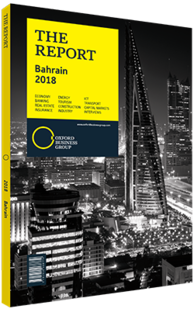Tim Murray, CEO, Aluminium Bahrain (Alba): Interview

Interview: Tim Murray
What patterns do you expect to see in global aluminium demand in the medium term?
TIM MURRAY: Current trends suggest that there will be a global market surplus of aluminium until 2020, though the peak surplus will be reached in 2018 before moving towards greater balance by 2022. Of course this assumes that Chinese production adjusts downward over the next couple of years. China currently accounts for approximately 60% of global aluminium output, but this is expected to fall by 3m-4m tonnes in 2017. The decrease in Chinese production will hopefully raise aluminium prices and create further opportunities for other aluminium producers to increase their market share over the medium term. On the other hand, as the dollar strengthens, the cost of raw materials will increase and accordingly production cost will also rise. This has been an important trend over the past year. However, the US currency dynamics will be overshadowed by global supply and demand trends.
Regionally as part of the diversification strategy, we are seeing increased interest in developing aluminium production capacity and related downstream industries. For Bahrain aluminium is a key industry and an important contributor to the economic development of the kingdom, so there is a significant amount of ongoing investment to take advantage of these trends. The $3bn Line 6 expansion project is the largest brownfield development project in the region and is expected to start production by January 1, 2019. Currently 50% of Alba’s production is sold locally to related downstream industries, and they will be able to capitalise on production increases to create jobs, and further boost local industry and the manufacturing sector.
Are there any regulatory measures that could be introduced to ease doing business in Bahrain?
MURRAY: Bahrain is a relatively small market, so access to export markets is an important aspect of the kingdom’s economic growth. Geographically speaking Bahrain is well positioned to access Saudi Arabia and the rest of the GCC, enabling shorter supply chains and more efficient logistics. With the necessary regulatory and financial regimes, the kingdom is ideally placed to be an industrial and manufacturing hub. To boost the contribution of the aluminium sector to Bahrain’s GDP, downstream growth requires not only the availability of aluminium and other input materials, but also efficient means to enter markets globally. In addition to physical access to export markets there is a significant opportunity for financial, insurance and legal organisations to assist and support exporters.
What is the current state of the aluminium recycling market in the GCC, and what obstacles does it face?
MURRAY: Aluminium recycling is still in the early stages of its development in the GCC and it represents an area with strong growth potential, particularly as downstream manufacturing capabilities increase. Recycling requires significantly less energy input than aluminium production from alumina, thereby reducing the cost while also having the advantage of being environmentally friendly. As the GCC moves into industries beyond oil, there will be lots of structural reforms to diversify revenue streams and the recycling business has the opportunity to take advantage of this trend. Bahrain is well positioned geographically to become a hub for both the downstream and the recycling industries.
Until recently recycling across the board has been limited. This was due partly to the lack of recycled production and partly to the issue of surplus aluminium production, as the initial focus has been on expanding production capacity. With the low cost of energy, the savings gained through recycling were overlooked. Without the necessary regulatory or financial framework in place, it has been difficult for the recycling industry to take hold. Recently this has been changing and I expect many of the current hurdles to be overcome over the next few years as the calculus changes.
You have reached the limit of premium articles you can view for free.
Choose from the options below to purchase print or digital editions of our Reports. You can also purchase a website subscription giving you unlimited access to all of our Reports online for 12 months.
If you have already purchased this Report or have a website subscription, please login to continue.

